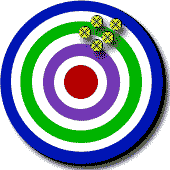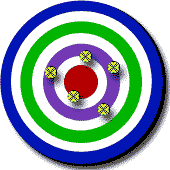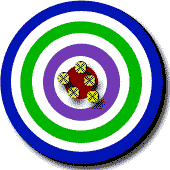The basis of separation is that everything is made up of different components or properties. These components can be separated and then individually analysed.
Strategy: Devise a process that will separated the substance best. Use properties such as
Low/High density
(non) volatile
(non) soluble
(un) reactive
(non) magnetic
(non) polar
Properties of Separation:
The components stay the same
The more similar the components are, they harder it is to separate them.
Examples of separation methods:
Hard Separation (two solids): mechanical or heterogeneous mixture separated by a magnet sieve, etc.
Evaporation (Solid dissolved in a liquid): Boil away the liquid to leave the solid.
Filtration ( solid (not dissolved) in a liquid): Pour through a porous filter, solids stay behind because they are larger than the pores in the filter.
Crystallization (solid in a liquid): A precipitate is formed by a chemical or physical reaction. The solution is then filtered. Then it is evaporated to form crystals which is then filtered again to produce the remaining solvent.
Gravity (solids): A centrifuge whirls a test tube around, pushing the more denser objects to the bottom. (Works best for small volumes)
Solvent Extraction: Solvent is used to dissolve one component of the mixture. Only works when the solvent dissolves one component.
Liquid: dissolves one solid, leaves the other behind.
Solution: Solvent is insoluble with solvent present. The solvent dissolves one or more of the substances and leaves behind the unwanted substances. Then it is shaken in a separatory funnel which forms layers in the solution. Some of these layers can be drained to leave you with the wanted material.
Distillation(Two Liquids): Mixture is heated, one substance has a lower boiling point than the other. It evaporates up a tube and then condenses on the other side.
Chromatography: Used to separate very complex mixtures. A mobile phase is swept over a stationary phase. Components move over stationary phase at different speeds, allowing each components to be collected individually, producing very precise and accurate information.
Sheet Chromatography
Paper Chromatography: The stionary phase is paper soaked in a liquid. The mobile phase is a solvent. The results appear as dots on the paper.
Thin Layer Chromatography: The stationary phase is Al 2 O3 or Si O2 which is an absorbent on glass. The mobile phase is poured over, some components bond with the absorbent, appearing as dots on the sheet.
Here is a very good video explaining many of the above mentioned separation techniques
Law of Multiple Prportions
Elements can combine in different ratios to form compounds
Such as NO2, NO, N2O or N2O5











